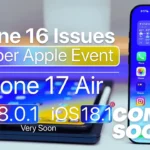Resolving Slow Performance Issues on Windows: A Comprehensive Guide
I. Understanding the Causes of Slow Performance
————————————-
A. Insufficient System Resources
1. RAM (Random Access Memory) limitations
2. CPU (Central Processing Unit) overload
3. Disk space constraints
B. Software-Related Issues
1. Outdated or incompatible software
2. Bloatware and unnecessary background processes
3. Corrupted or fragmented files
C. Hardware-Related Factors
1. Aging or faulty hardware components
2. Insufficient storage devices
3. Overheating or inadequate cooling systems
II. Optimizing System Performance
———————————–
A. Perform a Full System Cleanup
1. Remove unnecessary files and programs
2. Clear browser caches and temporary files
3. Utilize disk cleanup and defragmentation tools
B. Update Software and Drivers
1. Install the latest Windows updates
2. Update device drivers
3. Remove unnecessary or incompatible software
C. Manage Startup Programs and Services
1. Disable unnecessary startup applications
2. Control background processes and services
3. Utilize Task Manager for monitoring resource usage
D. Optimize Power Settings
1. Adjust power plans for better performance
2. Disable unnecessary power-hungry features
3. Enable power-saving modes for portable devices
III. Enhancing Hardware Performance
———————————–
A. Upgrade RAM or Memory
1. Determine memory requirements
2. Install compatible RAM modules
B. Upgrade Storage Devices
1. Consider Solid State Drives (SSDs)
2. Migrate to larger or faster hard drives
C. Ensure Proper Cooling and Ventilation
1. Clean dust from fans and vents
2. Use cooling pads for laptops
3. Check for proper airflow in desktop systems
D. Monitor Hardware Temperature
1. Use temperature monitoring software
2. Check for overheating components
3. Ensure adequate cooling solutions
IV. Additional Tips for Performance Optimization
——————————
A. Disable Visual Effects
B. Adjust Virtual Memory Settings
C. Utilize ReadyBoost for USB Caches
D. Uninstall Unnecessary or Unused Programs
E. Use Lightweight Alternative Software
F. Disable or Limit Background Services
G. Scan for Malware Regularly
H. Disable File Indexing for Non-essential Drives
V. Conclusion
————————
By following the steps and implementing the tips outlined in this comprehensive guide, you can effectively address and resolve slow performance issues on your Windows computer. Regular system maintenance, software updates, and hardware optimization are key to ensuring smooth and efficient operation. Remember to monitor your system’s performance regularly and address any emerging issues promptly. With a well-optimized and responsive Windows system, you can enjoy increased productivity and a seamless computing experience.
.png)
.png)
.png)






